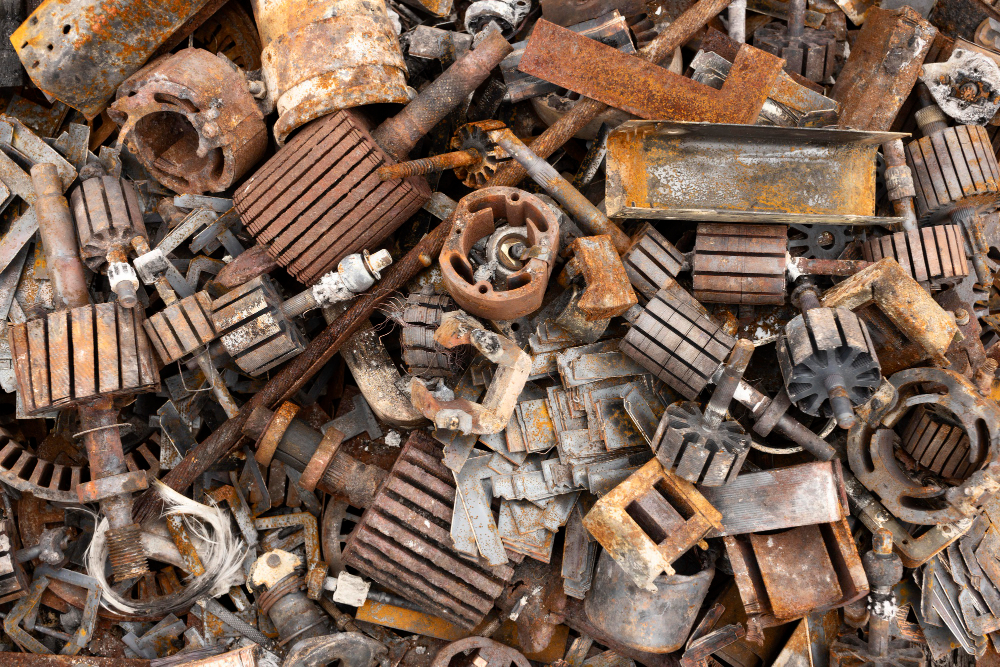Excavations are a common occurrence in construction, infrastructure development, mining, and a variety of other industries. Whether it’s digging foundations for buildings or mining for valuable resources, excavations are essential. However, the safety of workers and the environment in and around these excavation sites is of paramount importance. In the absence of specific information regarding soil conditions, it is a well-accepted practice to treat all soil as if it is contaminated. This precautionary approach is rooted in safety regulations, environmental concerns, and the potential risks associated with unidentified contaminants. This article explores the reasons behind treating all soil in an excavation as if it is contaminated, the regulatory framework that supports this approach, and the practical precautions necessary to ensure the safety of workers and the environment.

I. Understanding the Precautionary Approach
1.1 Soil Contamination: An Unseen Threat
Soil contamination refers to the presence of hazardous substances in soil that can pose risks to human health and the environment. Contaminants in soil can range from heavy metals and toxic chemicals to biological hazards. The concern with soil contamination lies in the fact that it is often invisible to the naked eye, making it difficult to identify without proper testing. This invisibility is a major reason why a precautionary approach is warranted in excavations.
1.2 The Precautionary Principle
The precautionary principle is a fundamental concept in environmental management and safety. It suggests that if an action or policy has the potential to cause harm to the public or the environment, in the absence of scientific consensus, the burden of proof falls on those advocating for the action. In the context of excavation, the precautionary principle supports the assumption that all soil is contaminated until proven otherwise. This is based on the understanding that failure to take such precautions can result in severe consequences if contamination is present.
1.3 Risks Associated with Soil Contamination
Soil contamination can have wide-ranging and severe consequences, both for human health and the environment. These risks include:
1.3.1 Health Risks: Exposure to contaminated soil can lead to various health problems, such as respiratory issues, skin disorders, and even more severe conditions like cancer. Long-term exposure can result in chronic health issues.
1.3.2 Environmental Risks: Contaminated soil can adversely affect plant and animal life, water bodies, and ecosystems. It disrupts the natural balance and can lead to long-lasting environmental damage.
1.3.3 Legal and Financial Risks: Non-compliance with regulations related to soil contamination can lead to legal repercussions, including fines and lawsuits. Cleaning up contaminated sites is also a costly endeavor.
II. Regulatory Framework Supporting Precaution
2.1 Occupational Safety and Health Administration (OSHA)
In the United States, OSHA plays a vital role in regulating and ensuring the safety of workers in excavation operations. OSHA’s standards emphasize the need for soil testing and the assumption that all soil is contaminated until proven otherwise. The Soil Classification System employed by OSHA categorizes soil into four types – Type A, B, C, and D, with Type D being the most unstable and potentially contaminated. OSHA standards (29 CFR 1926.652) mandate specific protective measures, such as sloping, benching, shoring, or shielding, depending on the soil type.
2.2 Environmental Protection Agency (EPA)
The EPA is responsible for regulating environmental protection and addressing soil contamination issues in the United States. It enforces various regulations, including the Comprehensive Environmental Response, Compensation, and Liability Act (CERCLA) and the Resource Conservation and Recovery Act (RCRA), which have significant implications for excavation activities. The EPA’s regulations and guidelines support a precautionary approach, emphasizing the need for thorough site assessments and soil testing to identify potential contaminants.
2.3 International Standards
Internationally, several standards and guidelines are in place to ensure safe excavation practices and to address potential soil contamination:
2.3.1 ISO 45001: This international standard for occupational health and safety management systems encourages organizations to adopt a proactive approach to identify and mitigate risks in excavation projects, including soil contamination.
2.3.2 European Union Regulations: The EU has established strict regulations to address soil contamination, with an emphasis on identifying and remediating contaminated sites. These regulations have implications for excavation operations within the EU.
2.3.3 Australian Standard AS 2436: This standard provides guidelines for site testing, categorization of soil, and the appropriate safety measures for excavation in Australia.
III. Practical Precautions
3.1 Site Assessment and Testing
Before any excavation begins, a comprehensive site assessment is essential. This assessment should include a review of historical site information, geological surveys, and soil testing. Soil testing is a critical step in identifying potential contaminants. It involves collecting samples from various depths and analyzing them for the presence of hazardous substances. Various testing methods, such as chemical analysis and geophysical testing, can be employed to determine soil conditions.
3.2 Soil Classification
As mentioned earlier, OSHA’s Soil Classification System categorizes soil into different types based on its stability and the potential for contamination. Depending on the soil type, specific protective measures must be employed to ensure the safety of workers and prevent collapses.
3.3 Personal Protective Equipment (PPE)
The use of appropriate personal protective equipment is crucial in excavation work. This includes protective clothing, gloves, respiratory protection, and eye and face protection. Workers should be trained in the proper use of PPE to minimize the risks associated with potential soil contamination.
3.4 Containment and Control Measures
To prevent the spread of contaminants and ensure worker safety, containment and control measures must be implemented. This can include the use of barriers, berms, and silt fences to control runoff and the containment of potentially contaminated soil. Contaminated soil should be isolated and properly managed.
3.5 Environmental Considerations
Excavation activities can impact the surrounding environment. It is important to take measures to minimize environmental risks, such as preventing soil erosion, controlling stormwater runoff, and implementing erosion control measures. This is particularly crucial when working in environmentally sensitive areas.
3.6 Worker Training and Awareness
Proper training and raising awareness among workers are essential in ensuring the success of the precautionary approach. Workers should be educated about the risks associated with soil contamination, the use of PPE, and safe excavation practices.
IV. Case Studies: Consequences of Neglecting Precautions
4.1 Love Canal, USA
The Love Canal disaster is a well-documented case of soil contamination and its long-term consequences. In the 1940s, a chemical waste landfill was created in Love Canal, New York. Later, homes and a school were built on top of this contaminated soil. Over time, the toxic chemicals buried in the ground began to leach into the environment, causing severe health problems for residents, including birth defects and cancer. This case serves as a poignant reminder of the importance of treating all soil as if it is contaminated in the absence of other information.
4.2 Woburn, USA
The contamination of Woburn’s groundwater with toxic chemicals, including trichloroethylene (TCE), led to a significant legal case and the publication of the book “A Civil Action.” The contamination was linked to industrial activity, and it had severe health consequences for the residents. The case emphasizes the need for rigorous site assessments and soil testing to identify and mitigate contamination risks.
V. Conclusion
In conclusion, the precautionary approach of treating all soil in an excavation as if it is contaminated in the absence of other information is a well-established and necessary practice. The potential risks associated with soil contamination, including health, environmental, legal, and financial consequences, demand a proactive stance. Regulatory bodies such as OSHA and the EPA support this approach and require strict adherence to guidelines and standards to protect workers and the environment.
The practical precautions outlined in this article, including site assessment, soil testing, soil classification, personal protective equipment, containment measures, and environmental considerations, are vital in ensuring safety and minimizing environmental impact. Neglecting these precautions can lead to severe consequences, as seen in the Love Canal and Woburn cases.
Ultimately, safety in excavation operations should be paramount, and the precautionary approach serves as the foundation for protecting the well-being of workers, communities, and the environment. As the saying goes, “It’s better to be safe than sorry,” and when it comes to soil in an excavation, this principle holds true. Treating all soil as if it is contaminated is not just a practical approach; it’s a responsible one, ensuring that the potential dangers lurking beneath the surface are addressed and mitigated before they can cause harm.





